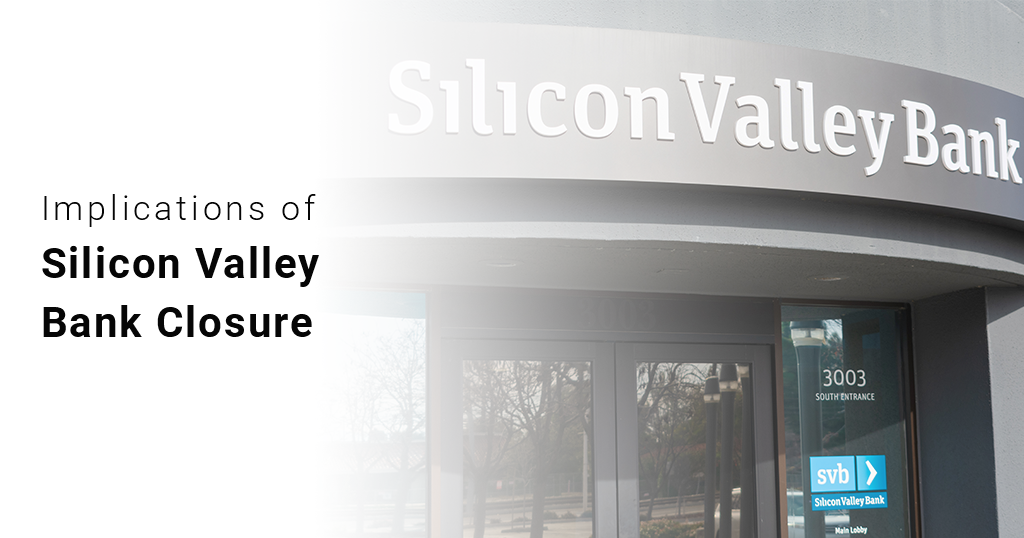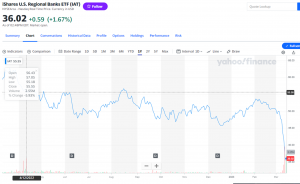
Last week, California regulators shut down Silicon Valley Bank (SVB), marking the first time the U.S. government took control of a major bank since the 2008 financial crisis. In total, three banks, Silvergate, SVB, and Signature Bank, have been closed and placed under administration of government agencies.
On Monday morning, a trio of government agencies, the Federal, US Treasury, and the FDIC jointly announced that they will ensure that depositors of these banks have access to 100% of their deposits when the markets opened. The immediate crisis has been averted, with many small businesses and venture backed companies able to draw on deposits to make payroll and meet expenses.
Several factors contributed to this collapse, which imply that a banking contagion is unlikely. These factors include a concentration of customers in cryptocurrencies and venture capital sectors, a surge in deposits in at a time of record low interest rates, asset liability mismatches that were specific to the banks in question and a surge in withdrawal that foreshadowed a run on the bank.
While the immediate crisis has been averted and arguments can be made that these closures are an isolated occurrence, pressure remains on other regional banks – The IShares US Regional banks ETF closed Friday at $41.40 and hit a low of $33.05 down 20% before closing at 35.43 on Monday. Several regional banks including First Republic and Western Alliance were halted for excessive volatility during the day.

There is a legitimate reason for concern over further bank runs and mark to market losses on bank loan/investment portfolios. While there were unique circumstances contributing to these closures, there are also structural factors impacting our financial infrastructure. The fourth quarter of 2022 saw a UK pension crisis triggered by rising rates, and now we are seeing the first US bank failures since the financial crisis in 2008.
Fed rate hikes appear to be off the table for the time being. Last week the market was pricing in a 50-bps rate hike, this morning the bond market yields are lower by 50 bps across the curve.
InvestX Portfolio
Data analyzed by Fortune reveals that SVB was the primary financial institution of 50% of all startups, the bank also custodied assets for some 1,074 private equity and venture capital funds. This highlights the structural importance of SVB to the venture capital ecosystem in the US and why ensuring access to customer deposits was so important to US economic activity.
Approximately 2/3 of the InvestX portfolio had exposure to one of the closed banks. Despite significant exposure, we did not notice dramatic impacts on company operations from the information we were able to gather. Likely for the following reasons.
– InvestX selects companies that are at a later stage of growth.
– They have a more mature revenue profile.
– Many are at or near profitability.
– Some had managed to take steps to move money from SVB before the closure.
– A number had diversified banking exposure with multiple service providers.
Ongoing Implications
With the immediate crisis past, we turned our attention to the potential ongoing impact of the recent bank closures and have put together a list of potential direct and indirect consequences.
1. The drop in market rates will reduce mark to market losses at banks improving their balance sheet.
2. The Federal Reserves’ ability to continue rate hikes without further risk of banking issues has been constrained.
3. Inflation is likely to remain above target, increasing the risk of structural inflation and inflation expectations.
4. More uncertainty in the Inflation/recession debate.
5. Could bring forward an end to QT and an earlier start to QE which would benefit markets.
6. Crypto has been effectively debanked in the US with the closure of 3 main providers.
7. Second warning of structural issues in the system following the UK pension crisis in Q4 2022
8. Venture debt programs to come under scrutiny after years of excellent returns.
9. Funding for VC companies has become more difficult.
a. VCs will be even more cautious with capital.
b. Early-stage companies become riskier.
c. VCs will need to decide between supporting existing investments vs. new investments.
d. Window for VC raising new capital got extended.
e. Deals in current pipeline getting delayed further.
10. Highlights risk to employees of equity positions.
a. Likely to result in more secondary sales as employees take money off the table.
b. Further cost cutting and RIF likely to come.
11. More pressure on secondary valuations.
a. More supply
i. Primary supply for next rounds.
ii. Secondary supply from employees and funds seeking liquidity.
b. Less demand
i. Fewer new fund raises.
ii. Less crossover demand.
iii. IPO exits still not an option.
Outlook for InvestX Fund IV
This does not change the outlook for InvestX Fund IV, in fact it likely magnifies the impact of a number of factors that we have emphasized as beneficial features for Fund IV investors.
1. Investment period 2024-2025 should be a low point in the market.
2. Distressed sellers in the secondary market.
3. Limited buyers of secondary shares.
4. Lower valuations than 2021 and 2022, revised 409a and primary rounds.
Contact Us to learn more about investing in InvestX Fund IV or InvestX SPVs.
Recent Posts
- Market Update, June 2025: IPO Activity Reaccelerates – Implications from CoreWeave, Circle, and Chime 06th Jun 2025
- Private Markets Review – Q1, 2025 14th Apr 2025
- xAI and X.com Merger: InvestX Analysis 10th Apr 2025
